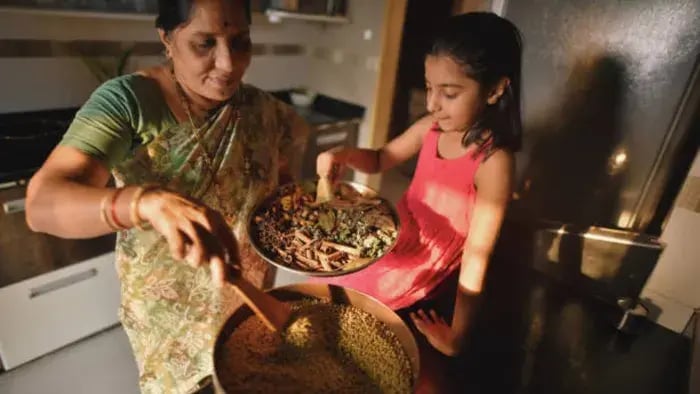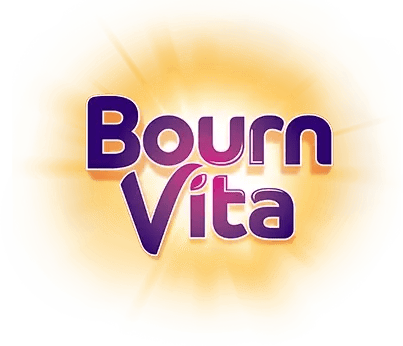- Sesame Seeds (Til)
- Black Beans (Kala Chana)
- Spinach (Palak)
- Pumpkin Seeds
- Whole Moong (Green Gram)
Introduction
Magnesium is an essential nutrient for growing kids. It helps the body to form strong bones and steady nerves, to relaxed muscles and balanced energy. Magnesium is involved in hundreds of daily functions. Yet, especially vegetarians, are deficient without even realising it.

Magnesium tends to stay in the background, even though it plays a big role in your child’s overall health. Low levels don’t always show up clearly; they might just look like daily struggles: restless sleep, low energy, headaches, or leg cramps. It’s easy to miss. While supplements are an option, it’s far better to rely on natural sources. Many Indian vegetarian foods already carry this mineral; you just need to know where to look.
You might already be eating some of these foods, but not in the amounts that make a difference. Or perhaps you’ve overlooked a few underrated ingredients that are surprisingly rich in this vital mineral. The good news is that many Indian staples, lentils, seeds, and leafy greens, have magnesium in abundance when included regularly.
Here are five magnesium-rich vegetarian foods that are simple, versatile and probably already part of your diet – just waiting to be noticed and used with more intention.
The Quiet Power of Magnesium: 5 Vegetarian Foods You May Be Overlooking

This mineral quietly plays a role in everything from bone strength and nerve health to sleep quality and energy production. For kids, it supports steady growth and concentration. For adults, it helps regulate blood pressure, supports the heart, and even keeps stress in check. And yet, it’s surprisingly easy to miss, especially if you’re vegetarian and relying on familiar staples.
Here are 5 magnesium-rich vegetarian foods you may be ignoring—and why it’s worth bringing them back into focus.
Sesame Seeds (Til)
According to a study published in Nutrients. 2022, sesame seeds are loaded with magnesium, calcium, and iron, nutrients that support bone health, nerve function, and digestion. A tablespoon of sesame seeds provides around 30 mg of magnesium. You can sprinkle them over salads, add them to dry chutneys, or even make til laddoos with jaggery for a tasty treat. For kids, adding ground sesame to parathas or mixing it into chutneys is a great way to sneak in the benefits without changing flavour too much.
Black Beans (Kala Chana)
As per a study published in Front Nutr. 2023, kala chana is often used for its protein content, but it’s also a great source of magnesium. A cup of cooked black chana can give up to 90 mg of magnesium. That’s a big contribution to your daily needs. Soaked and boiled kala chana can be made into salads, stir-fries, or dry sabzis. It also works wonderfully in school tiffins when paired with boiled potatoes and lemon. It's filling, energising, and ideal for growing kids and active adults alike.
Spinach (Palak)
Research conducted by, Heliyon. 2020, shows that spinach is packed with fiber, iron, and magnesium, all in one leafy bundle. Just one cup of cooked palak offers over 150 mg of magnesium, making it one of the richest vegetarian sources. Include it in dals, soups, parathas, or blend it into smoothies with banana and curd. For kids who avoid green veggies, a palak-paneer stuffing inside a wrap or sandwich often works wonders.
Pumpkin Seeds
Pumpkin seeds might not be part of traditional Indian meals, but they’re slowly becoming more popular, and for good reason. Just two tablespoons of these seeds provide about 150 mg of magnesium. According to a study published in Plants (Basel). 2022, they’re also full of zinc and healthy fats, which support growth and immunity. You can roast and sprinkle them over porridge, mix them into trail mixes, or grind them into chutneys. They make for an excellent midday snack for teens or a sprinkle-on addition for breakfast bowls.
Whole Moong (Green Gram)
A study published in Nutrients. 2019, shows that moong dal, especially the whole green version, is often considered light and easy to digest. What’s often missed is its magnesium content, about 50–60 mg per cup when cooked. It's great for all age groups, from toddlers to elders. Use it in moong dal cheelas, sprouted moong salads, or one-pot khichdi with veggies. Since it’s easy on the gut, it’s perfect during recovery or for children with sensitive digestion.
Conclusion

Magnesium may be a quiet player in your diet, but its impact is loud when it comes to long-term health. From calming the nerves to building stronger bones and boosting energy, this mineral supports your body in more ways than one. Including more sesame, chana, palak, moong, and seeds into your weekly meals is a simple, affordable way to strengthen that foundation, without changing too much.
Her love for storytelling began with reading her grandfather’s speeches, where Tarishi saw the power of words in creating lasting memories. Combining her passions for food and writing, she has turned her life into a fulfilling path of sharing stories that celebrate flavours and how food brings communities together.
The views expressed are that of the expert alone.
The information provided in this content is for informational purposes only and should not be considered a substitute for professional medical advice, diagnosis, or treatment. Always seek the advice of your physician or another qualified healthcare provider before making any significant changes to your diet, exercise, or medication routines. This is a sponsored article.
References
https://pmc.ncbi.nlm.nih.gov/articles/PMC6627095/
https://pmc.ncbi.nlm.nih.gov/articles/PMC9182978/
















